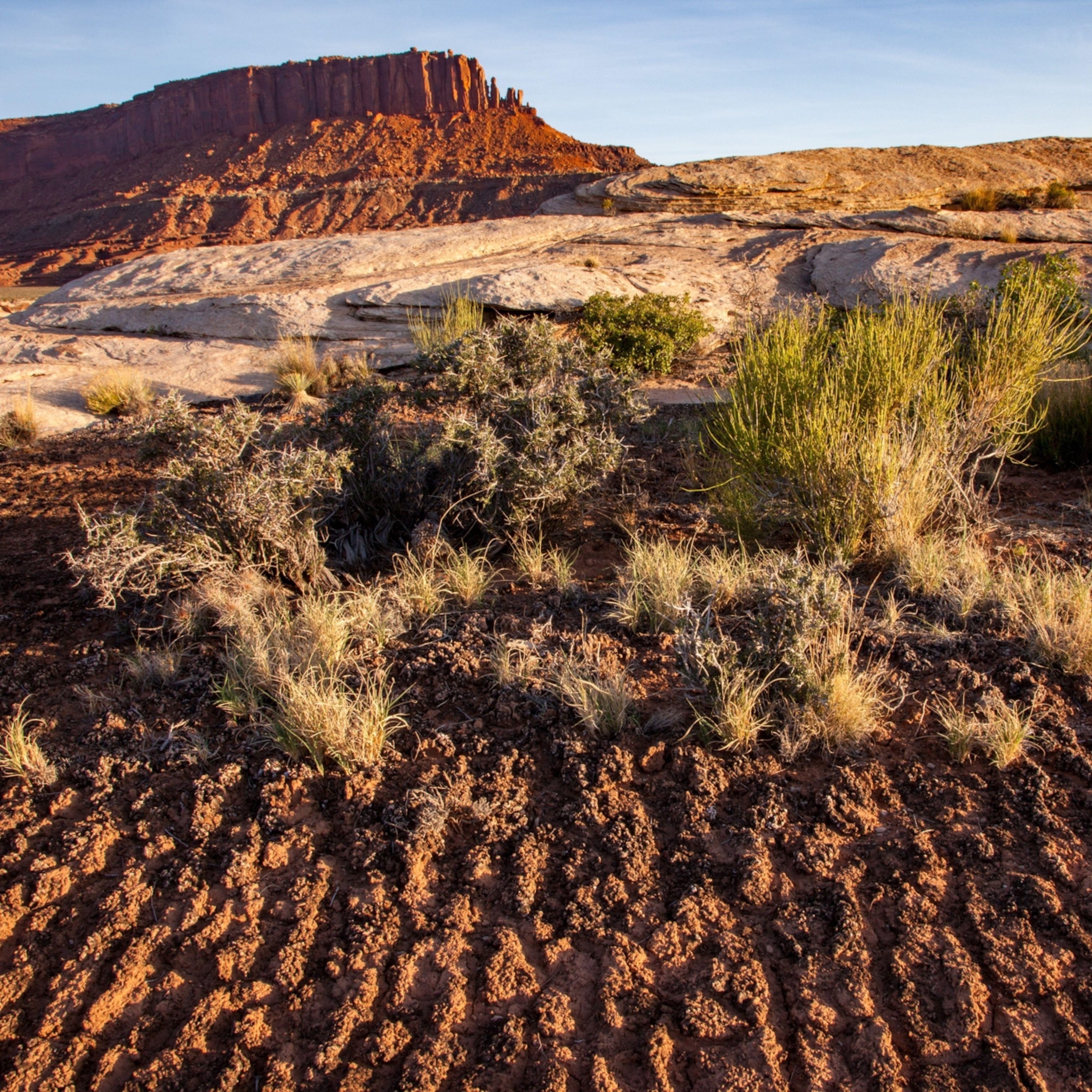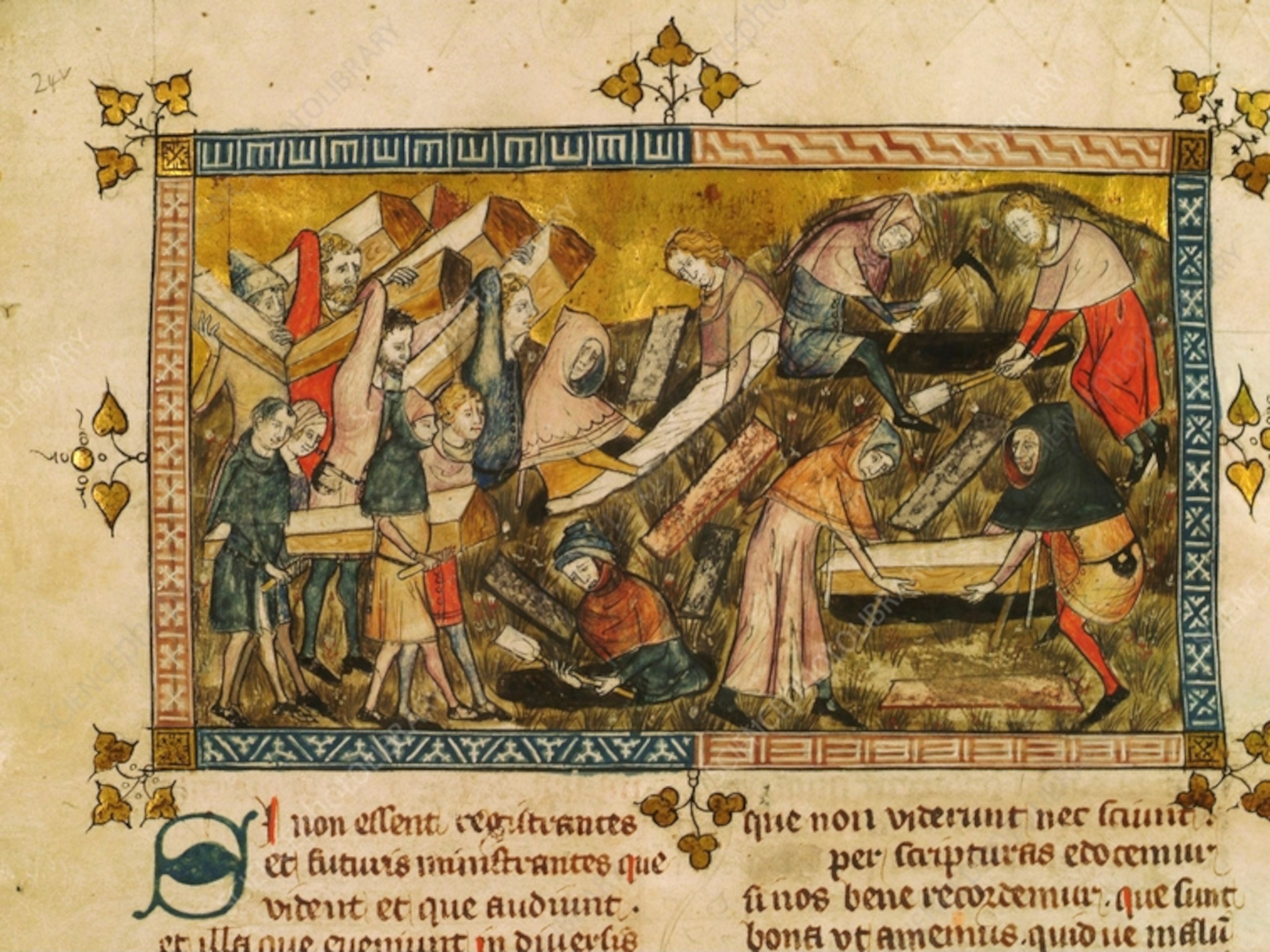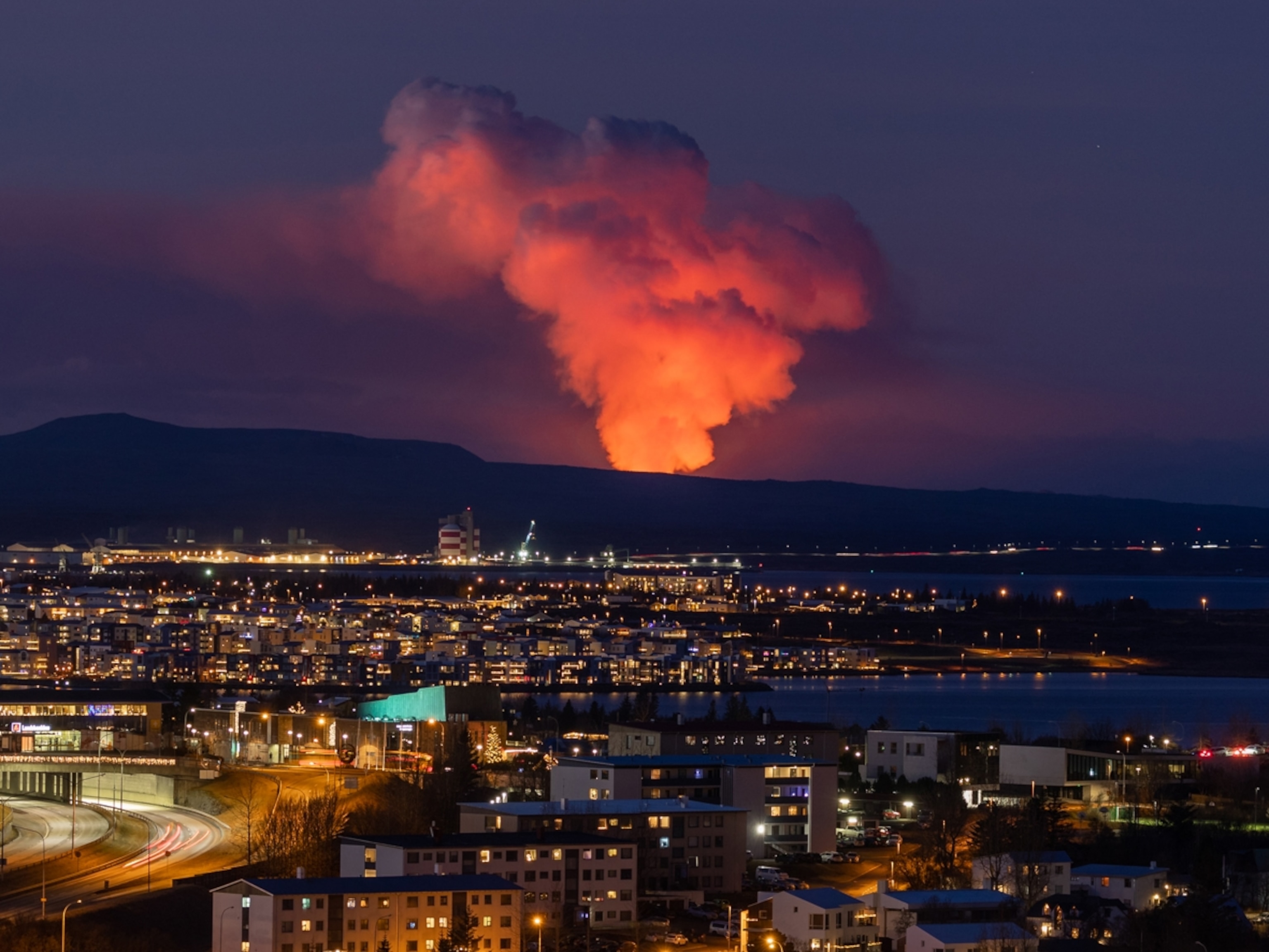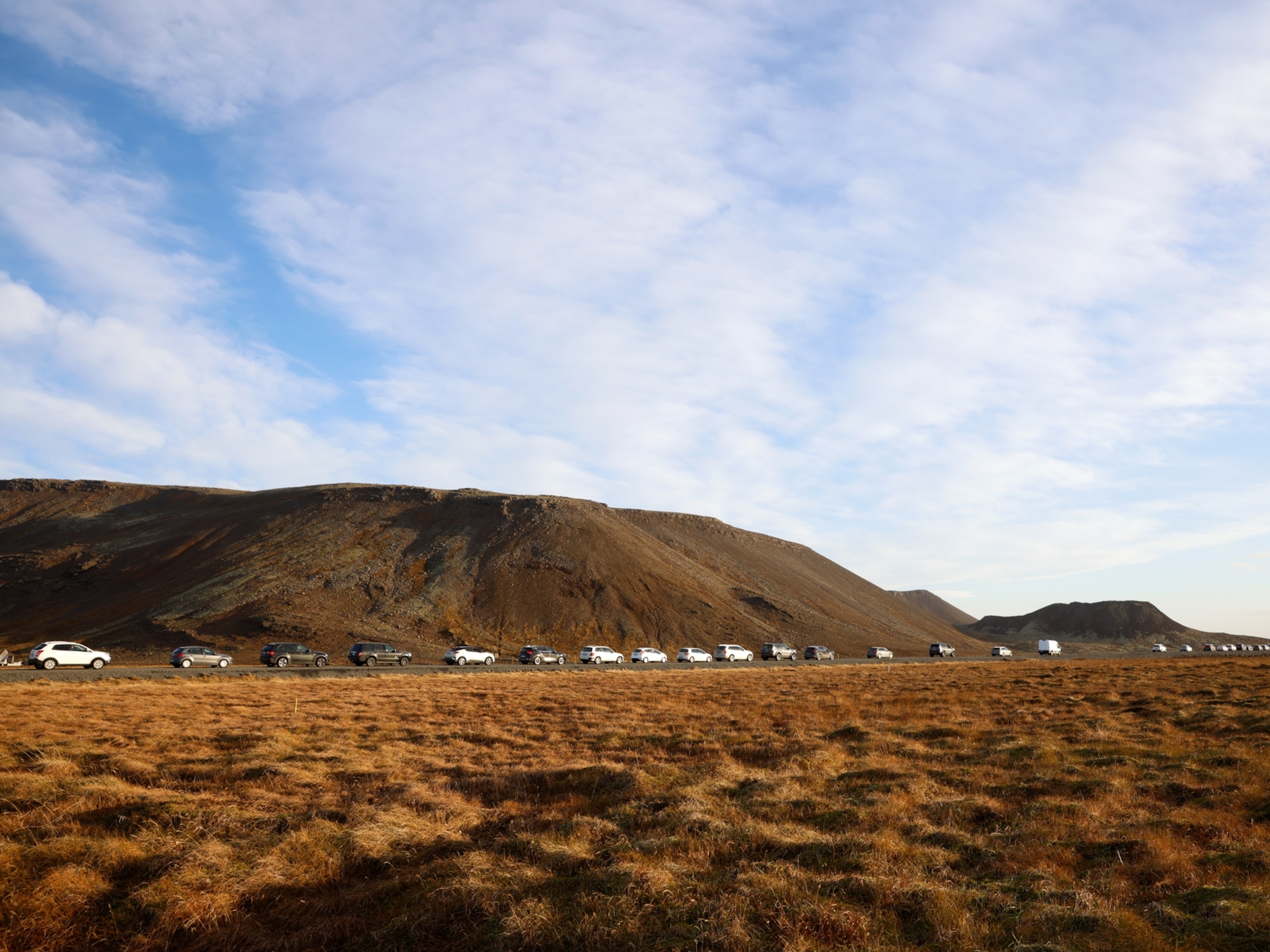
How volcanic eruptions help nourish the world
While their blasts can no doubt wreak devastation, they also create a fresh canvas that fosters life of every hue.
Solange Duhamel turned her back to the wind as it whipped nearly sideways across the rocky Icelandic landscape this past April. She shielded her face from pellets of hail, waiting for the storm to end. Yet Duhamel couldn’t help but stare in awe at the scene unfolding before her.
A stream of incandescent lava poured from the mouth of the nearby Fagradalsfjall volcano, which had been erupting for weeks, nearly filling the valley where Duhamel stood with jet-black rock. As hail collided with the lava field’s still sizzling surface, it instantly vaporized, rising in wisps of fog.
The hazy cloak that covered the landscape only enhanced the otherworldly feel of the process that Duhamel, an environmental microbiologist and biogeochemist at the University of Arizona, came to study: the birth of new land. Many people see volcanic eruptions solely as forces of death and destruction, and their capricious blasts certainly can wreak havoc. But eruptions also create a blank canvas that gives way to a rainbow of life.
Volcanoes have produced more than 80 percent of the rock on Earth’s surface today, both above and below water, blasting out craters and building mountains, islands, and plateaus. Eruptions dredge up nutrients from the bowels of our planet, spreading them in rock and ash that eventually break down, when on land, into fertile soils. The steps to release these nutrients come from the combined efforts of wind, water, and microbes. Together they transform the volcanic landscape’s shades of gray into rusty red and mustard yellow soils that soon explode with verdant plant life.
A more subtle rainbow comes to life under some volcanic surfaces. There, subterranean cavities offer niches where microbes may thrive, perhaps partially fed by nutrients and organics percolating down from above. Some of the colonies are visible to the naked eye—but shine ultraviolet light on the underground walls, and a microbial galaxy bursts forth. “You can see little individual colonies and the films showing up in glorious color,” says Jen Blank, an astrobiologist at NASA’s Ames Research Center.
Fagradalsfjall volcano’s violent awakening on March 19 gave Duhamel a golden opportunity to study one of the earliest steps in lava’s transformation: the microbial colonization of the cooled surface.
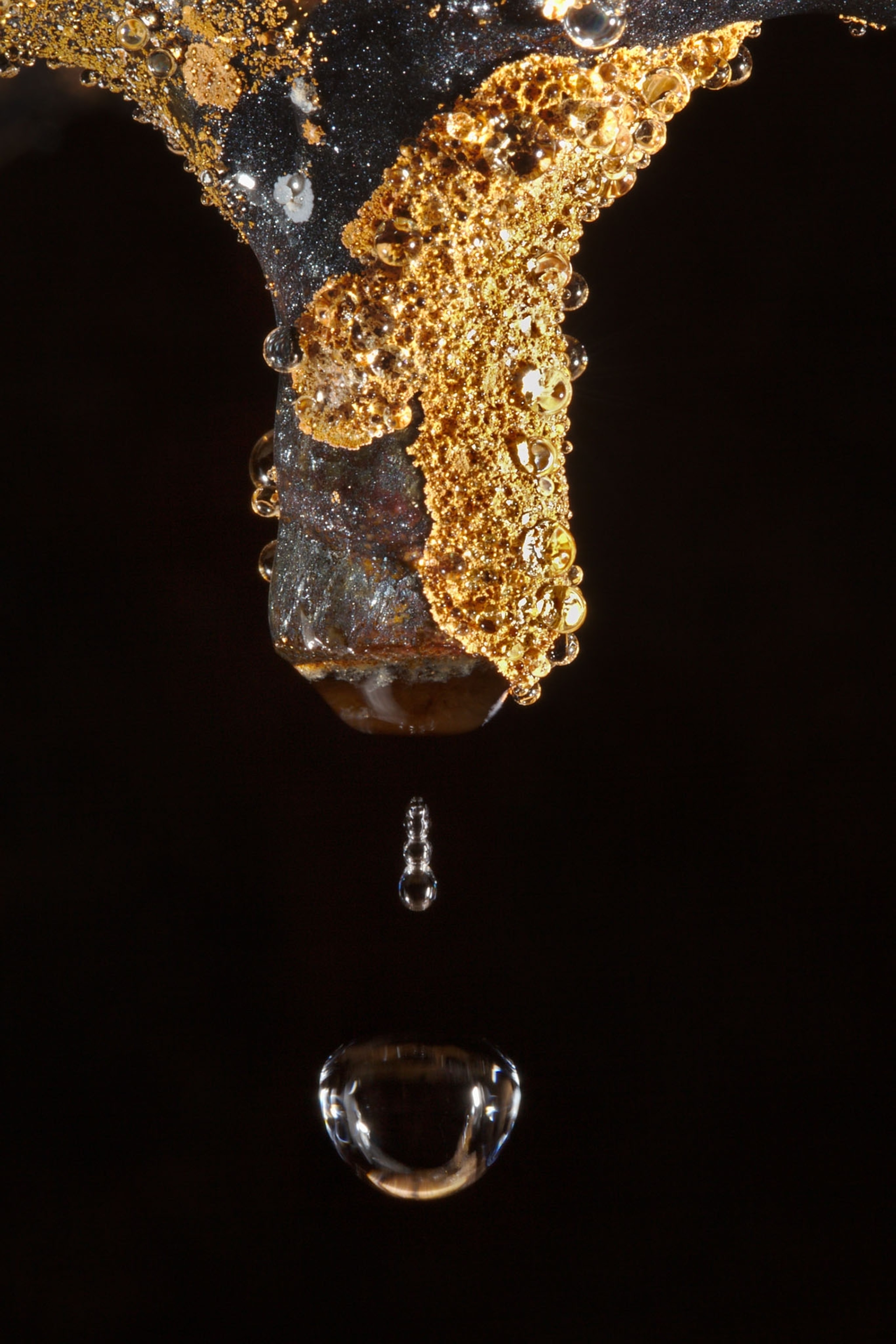

Cooled lava rock is initially sterile because it emerges from the earth at temperatures hotter than 2,000 degrees Fahrenheit, far too hot for life to survive. By collecting weekly samples on the surface, Duhamel and her colleagues hope to pin down what appears there and when. “It’s pretty rare to be able to study a volcanic eruption from the beginning,” she says.
Even once cooled, fresh expanses of lava rocks aren’t very hospitable to life. Volcanic ash and rocks are rich in magnesium, iron, calcium, potassium, and more, but these nutrients aren’t readily available for use. Many vital ingredients for life, such as nitrogen, are also scarce, so the pioneering microbes must be resourceful. Some early movers may be microbes that consume nitrogen from the air, converting that gas into forms that are easier for other organisms to use and setting the stage for later arrivals. “You can see it as a collaboration of life,” Duhamel says.
Meanwhile, the rock and ash slowly start to break down, made visible through chemical changes to the metals trapped within. Of particular importance is iron, which weathers to iron oxides, one of which we commonly know as rust. Wind and water partially drive both the physical and chemical changes. But some microbes also can transform the metals in the rock. “The microbes, in many ways, are the painters here,” says Boston University’s Jeffrey Marlow, who is collaborating with Duhamel to study the microbial transformation of volcanic minerals.
Key to this colorful transformation is the rapid breakdown of volcanic glass, which forms as lava rapidly cools and makes up both ash and parts of the rock. Yet the speed at which volcanic soils form and the hue they take on rely also on temperature, water content, vegetation, and more. Red soils, for example, often are found where the land is dry and sparsely vegetated and the rocks are full of iron. In cool, wet environments with abundant plants, an excess of organic matter turns the soils yellow or brown.
The weathering gives way to waves of larger forms of life. Lichens are usually the first to arrive as speckled sheets and frills of dusty greens, vibrant oranges, mustard yellows. These organisms are actually a partnership between fungi and algae, which allows them to survive in harsh environments where plants often fail. Their tiny, rootlike structures generate acid that helps break down the rock, preparing it for larger forms of life. What start as small islands and patches expand as they grow increasingly lush. “You will end up with a mosaic of different successional stages,” says Catalina González Arango, a paleoecologist at the University of the Andes in Colombia.
Volcanoes’ many colors may offer clues to what lies beyond our planet—and help scientists in their hunt for extraterrestrial life.
Volcanic eruptions craft a canvas not only for life aboveground but also for life belowground. Basaltic lava is poor in silica, making it runny, as seen at Fagradalsfjall or Hawaii’s Kilauea. As the molten rock flows like a river, upper layers may cool to form thick crusts that insulate the stream below. But if the flow is diverted or the eruption ends, it leaves behind what’s known as a lava tube.
The caves initially may seem like empty black husks, but a close inspection reveals many subtle hues from microbes. In some tubes, colonies of Actinobacteria spread in thin golden biofilms that repel water, Blank says. Other microbes seem to grow along with tiny white branches of “cave coral” or tawny polyps. Shining ultraviolet light reveals even more hidden diversity glowing in neon blues, oranges, and greens.
Volcanoes’ many colors—both aboveground and belowground—reflect the collaboration of geology and life that shaped our planet as we know it today. That interplay likely will continue long into the future. It may also give clues to what lies beyond our home world, helping scientists in their search for extraterrestrial life. Perhaps these scenes that seem so otherworldly could, in fact, be found on other worlds.
Maya Wei-Haas is a staff science writer at National Geographic.
This story appears in the December 2021 issue of National Geographic magazine.



